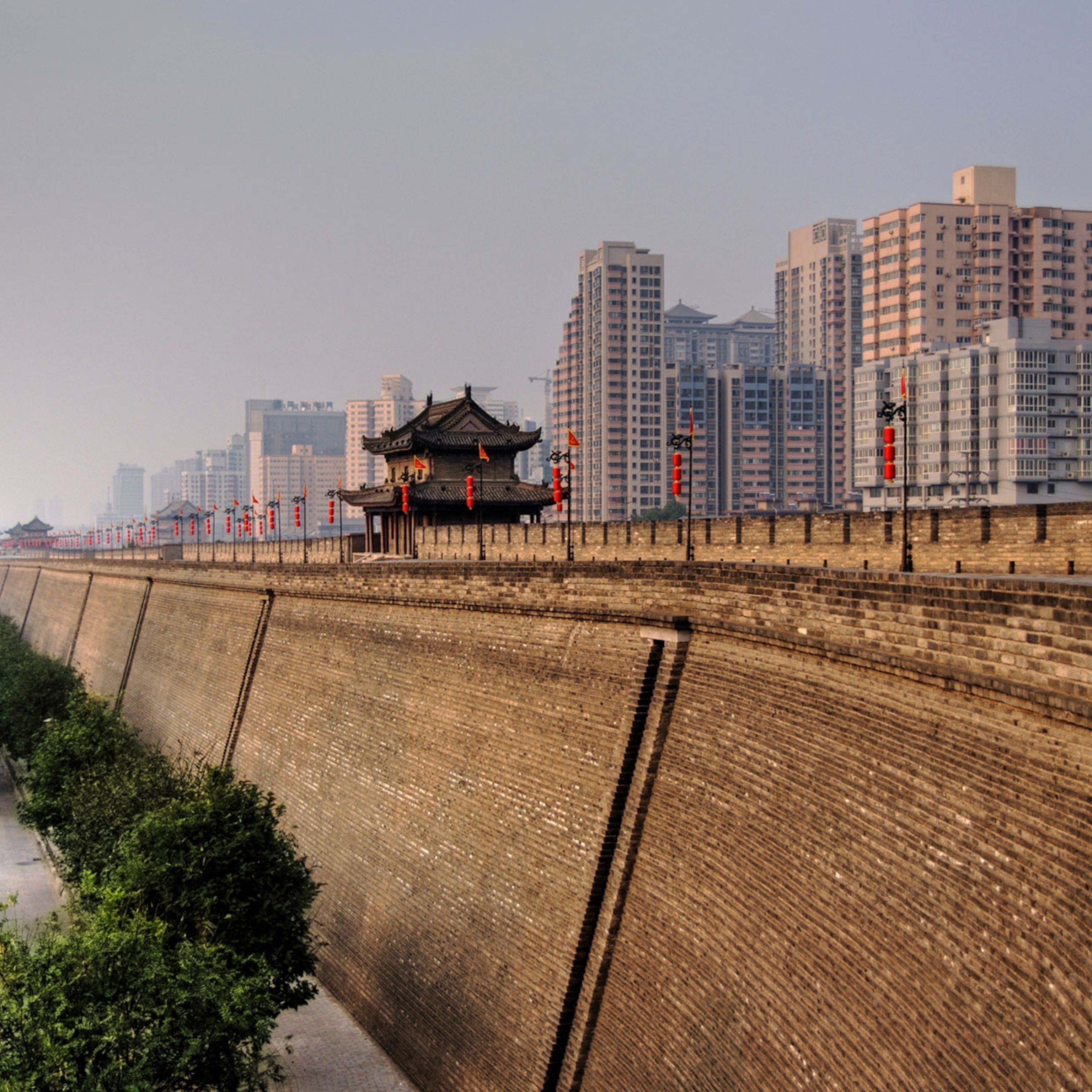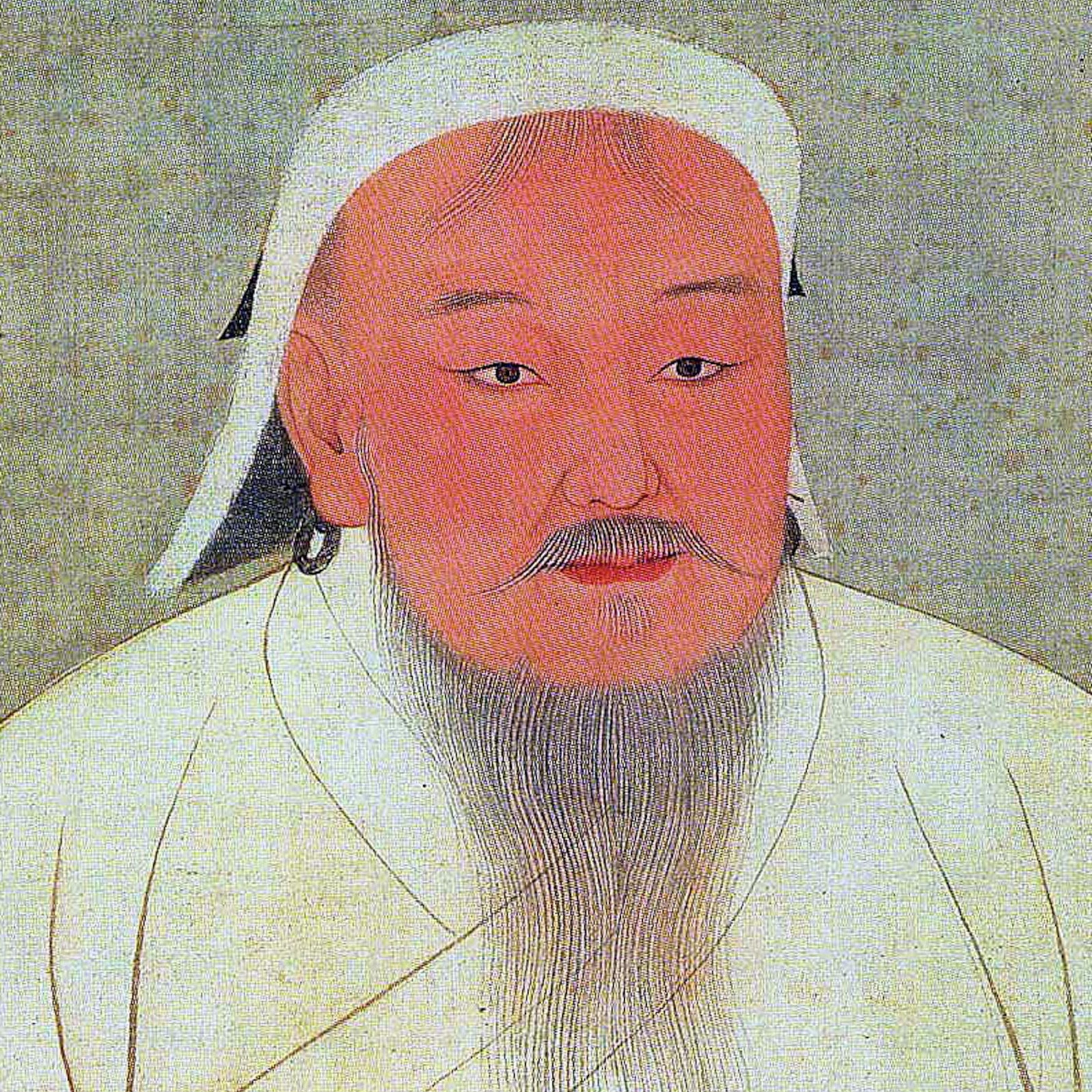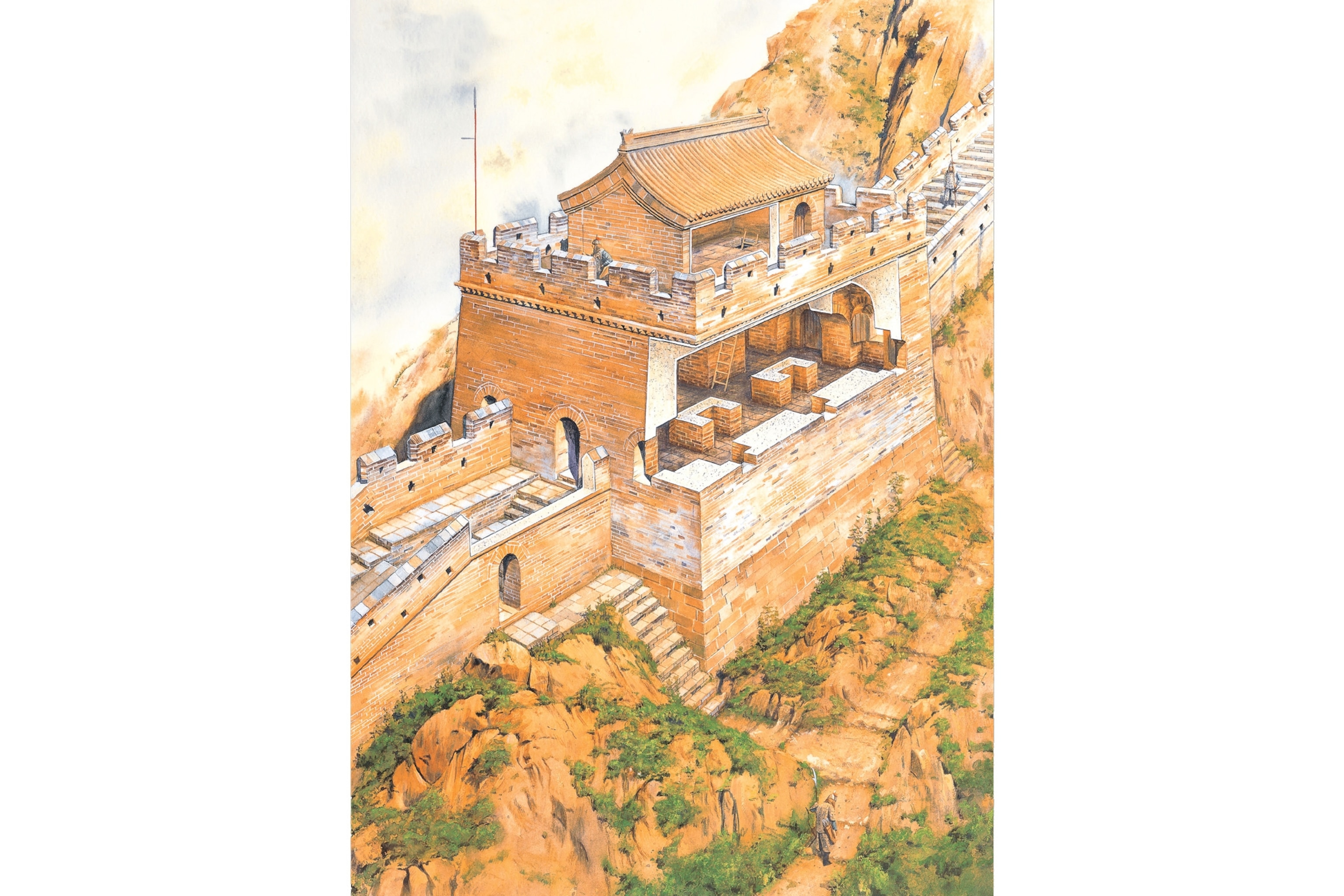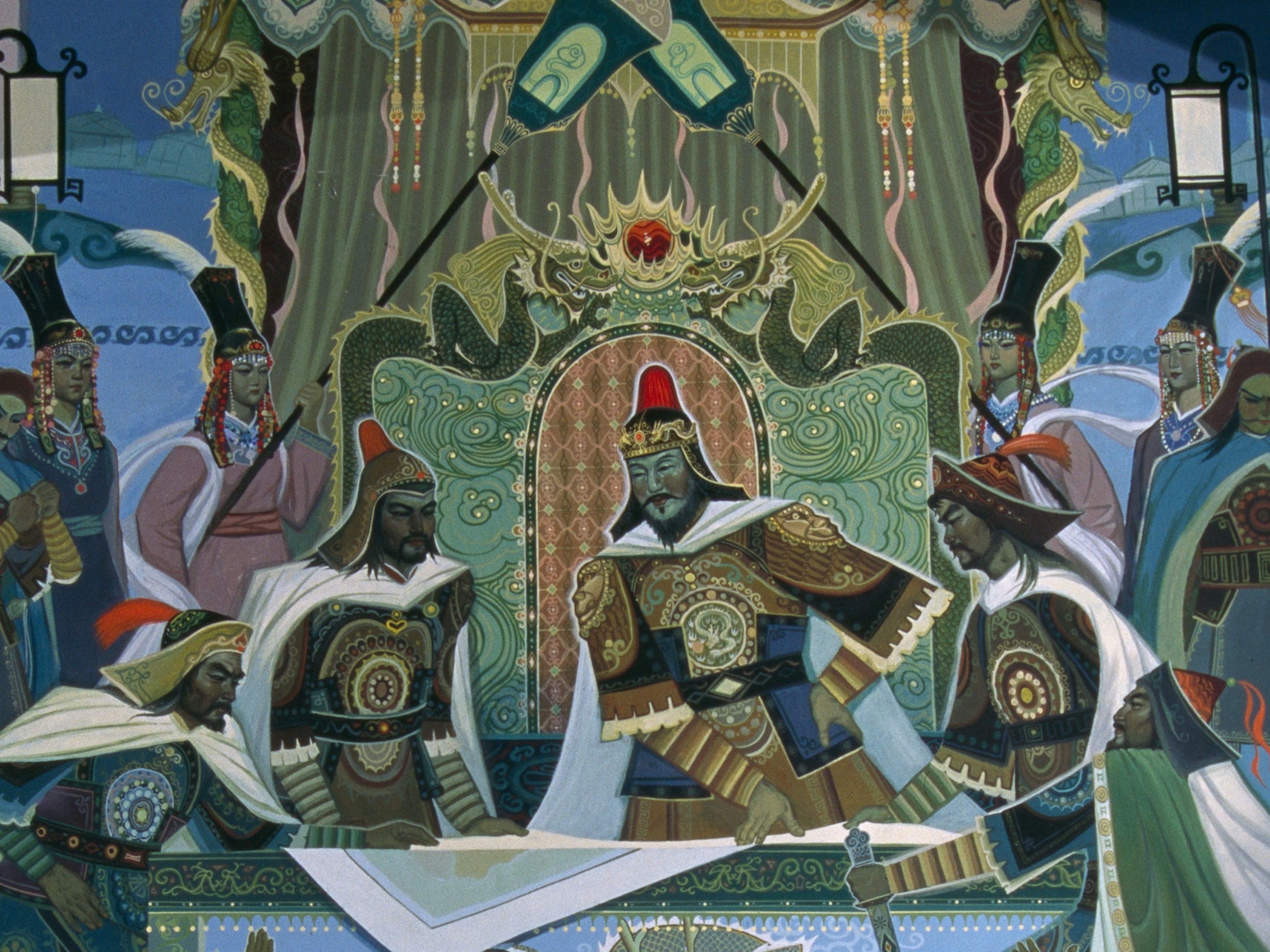
The Great Wall of China's long legacy
The Ming dynasty built a giant wall stretching 5,000 miles to keep invaders out of China, but how effective was it against the enemy?
Desolately the wind rises.
We march thousands of miles over vast distances.
Why do we cross the deserts?
To build the Great Wall.
This poem, written by Emperor Yangdi at the beginning of the seventh century A.D., is a lyrical reminder of the centuries spent by the Chinese building a wall to repel foreign invaders. Just one among many defensive strategies that China employed, the Great Wall stretches more than 5,000 miles long. Rather than one continuous wall, it consists of many smaller pieces, all built during different eras in history. (See also: Building walls may have allowed civilization to flourish.)

The earliest fortifications date back as far as the seventh century B.C., but the best-preserved sections were built during the Ming dynasty (1368-1644). The Great Wall is a marvel of engineering and triumph of human ingenuity, but the verdict is out on how well it worked at its primary function: keeping people out.
Northern Aggression
The primary threat to the Chinese came from the northern neighbors. Nomadic herders had inhabited the bordering steppe territories since the fourth century B.C. The harsh environment produced enough for the people to survive, but not much else. The northerners envied the goods and luxuries enjoyed by their southern neighbors, such as fine textiles and a wider variety of agricultural products.
("Lost" Great Wall of China Segment Found?)

The nomads’ population was significantly smaller than that of the Chinese but posed a serious military threat nonetheless. Astride their quick, hardy steppe ponies and armed with powerful bows and arrows, their warriors were capable of launching effective raids on the bordering Chinese states and taking what they wanted.(See also: Trading Silk for Horses: Origins of the Silk Road.)
Trading with the Enemies

Contact between northern nomads and the people of China was based as much on trade as war. On the steppes, the Mongols couldn’t grow many crops, making agricultural trade with the Chinese essential. There was also high demand among nomadic tribes for textiles such as silk and cotton, as well as metal to make weapons. The Chinese, meanwhile, coveted the nomads’ small horses for war. They could not raise the large number of mounts they needed in Chinese stables, and the nomads seemed to have more horses than anyone else. However, there was an imbalance in these trade relations: The Chinese could manage without horses, but the Mongols could not forgo food or clothing.
Chinese emperors resorted to numerous strategies to keep the nomads out, including engineering, warfare, and diplomacy. The first emperor of a united China, Qin Shi Huang Di (221-210 B.C.), created one of the first unified lines of fortifications along the entire northern border, linking existing structures built by previous states.

The emperors of the succeeding Han dynasty attempted economic as well as military strategies to deal with outsiders. They paid subsidies while simultaneously conducting campaigns on the steppes and building a new defensive wall. But these tactics failed to stop the invaders. Instead of ceasing their attacks, the northerners learned that not only could their incursions gain them quick access to goods, but they could also be used as a threat to request even more aid from the Chinese.
Over the next thousand years, relations continued in this fashion. Then, in the 13th century A.D., a chief called Temüjin unified the Mongols, shifting the balance of power in favor of the northerners. Temüjin—who had become emperor of the Mongols under the name Genghis Khan—attacked northern China in 1211 and captured the capital in 1215. His grandson, Kublai Khan, would succeed in capturing all of China and founding a new dynasty: the Yuan.
The Yuan dynasty didn’t last long. It was overthrown by a peasant revolt in 1368. The Mongol court fled the capital and took refuge on the steppes. China’s new reigning dynasty, the Ming (1368-1644), began an aggressive campaign to prevent the Yuan from attempting to return to power. But going on the attack would prove disastrous in 1449, when they suffered a devastating defeat at the Battle of Tumu. From the 15th century on, the dynasty moved more and more onto the defensive.

Despite it being an unpopular policy among the Ming dynasty’s emperors and civil servants, foreign aid was repeatedly sent to the Mongols to contain them, an outlay that became a burden on public finances. Such measures failed to prevent a surge in border attacks by the emboldened Mongols, in part a tactic to force the Chinese to trade the goods so desperately needed on the steppes. According to Great Secretary Li Xian in 1459, the Mongols’ constant need for food and clothing “is a calamity for China.” It was not until 1571 that a powerful courtier, Minister Wang Chung Ku, convinced Emperor Longqing to change the policy. Trading posts were built on the border. The number of Mongol attacks fell, and China could wind down its expensive military campaigns.
Cooked in kilns at 2102 ̊F (1150 ̊C) for seven days, many of the Great Wall's bricks were as strong as reinforced concrete.
One Brick at a Time
In parallel with these diplomatic and economic maneuvers, the Ming embarked on building the Great Wall. Extensive construction began in the 16th and 17th centuries. Much of this massive barrier snaking up and down the hills still stands today. Earlier fortifications had taken the form of earthworks, but under the Ming program, they would be made from a stone base covered with brick.
An astonishing 5,000 miles in length, the new fortifications were vastly more ambitious than any of the previous structures, costing as much as a hundred times more than earlier walls, according to some chroniclers. The Ming rulers were determined their wall would withstand both nomadic aggression and the slower assaults of weather and time.

So far, its victory against erosion is an unqualified success. The barrier’s military effectiveness, however, is somewhat harder to assess. China’s northern border continued to suffer a very large number of attacks. Sometimes these were undertaken by armies numbering as many as 100,000 men, as well as by smaller groups of nomads. One example of the latter took place in Wo Yan in 1555, when a score of Mongol warriors attacked a tower in the middle of the night using grappling hooks to climb the wall. But just as they reached the top, the snorting of their horses alerted the Chinese guards.
Watchers on the Wall
The lives of the guards stationed along the wall’s vast length were extremely tough. In 1443 a document from the Ministry of the Army admitted that “soldiers on the northwest border are exposed to wind and cold. Whether they serve as watchmen on the signal towers or guards in the passes... they may be away from their base, family, and children for months or years, and are often lacking for clothing and food. It is true they are paid monthly but they often have to spend their money on weapons or horses. Their suffering from hunger and cold is indescribable.”
These harsh living conditions could partly explain the low morale among the soldiers. There is evidence of widespread distrust between civil servants and the men. In 1554 one official accused the border troops of cowardice: Whenever the enemy approached the wall, he said, they fled without putting up any resistance. In 1609 another account suggested lack of resources may have been at fault. Since the guards on the towers felt unable to defend themselves, they would not raise the alarm if they spotted Mongols nearby, preferring to pretend that they had not seen them.
Builders and Defenders
Chinese troops along the wall also had a great deal of friendly contact with the nomads. In spite of opposition from their superiors, Chinese border guards often traded with their enemies. In extreme situations, soldiers even openly colluded with them.
In 1533, according to one revealing account from a civil servant, soldiers on observation towers served as guides for Mongol war parties during their incursions into Chinese territory. In 1550 the military commander of the northern city of Datong reported: “Our troops and rangers often go into Mongol lands to trade with them and have made friends there. Four leaders, Altan, Toyto, Senge and Usin, have incorporated observation towers from our great frontier into their camps. The Mongols take our men’s place as watchmen and our soldiers replace their troops as herders. This means that no strategic information about our defenses goes unnoticed by the Mongols.” For all the Great Wall’s magnificence as a structure, it was only effective if manned by disciplined troops. The remoteness coupled with the harsh living conditions tested even the most steadfast.
The Rise of the Manchu
Weakened by two centuries of conflict with the Mongols, the Ming lost power internally. They yielded power to the Manchus after a peasants’ revolt in 1644. The Manchu, or Qing, dynasty (1644-1912), hugely expanded China’s borders northward, making the Great Wall largely unnecessary as a defensive measure.The wall stands as the world’s largest military structure and has been designated a UNESCO World Heritage site. It remains a potent symbol of the collective pride of the Chinese people. Even so, China’s iconic military monument was an imperfect defense in its long struggle against the irrepressible nomads from the north.











